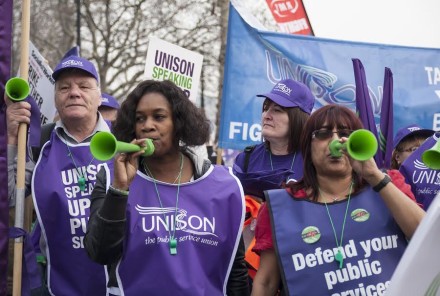
If I am honest I would have to admit that being a committed trade unionist can be both depressing and frustrating. Depressing because despite the heroic battles, legal victories and data showing the difference unions still make, membership and collective bargaining coverage is headed south at an alarming rate. And frustrating because the discussion about what the union movement should do about its decline is, despite the urgency, weirdly muted.
Part of the problem is that although there are brilliant examples of innovation, ideas about changing things too radically or at scale get bogged down in politics. Sometimes it’s the internal union sort; at other times it’s the tendency of many to look towards political solutions for trade union problems, in particular a Labour government committed to a raft of new trade union rights arriving like the cavalry from over the hill. What happens in the meantime to the millions in insecure or unfulfilling work – or on low or stagnant rates of pay? Like I say, depressing and frustrating.
A new paper I have written, published today, seeks to inject some tough love into the equation by calling on the movement to take collective responsibility for the current state of play and by starting a debate around some proposals for new trade union institutions specifically aimed at plugging gaps in current trade union organisation. The start point is new analysis that shows union membership and organisation today to be largely a legacy of earlier times when the public sector, manufacturing, transport and utilities dominated the picture. In terms of employment growth today, these are sectors in decline. The other side of the coin is that in sectors and types of employment that are growing, in retail, administrative and support services, hospitality and freelance work, union organisation is, at best, thin on the ground. Apart from anything else this means that even if union rights were given a boost by an incoming Labour government, there would be a huge question mark over the ability of unions to take advantage of them.
It is in this context that the movement needs to look carefully at building new institutions, which both promote innovation and enable resources to be targeted in more strategic ways. This needn’t be about changing what currently exists – just augmenting it. The following are among the ideas set out in the paper.
A new centre for trade union growth charged with developing movement wide strategic and tactical plans to boost membership and organisation where it is currently weak or non-existent. It would also make assessments about types of membership (e.g fees and benefits/services) and resources (e.g. number of organisers) necessary to achieve breakthroughs. The centre would be established by the TUC, but given licence to operate independently of day-to-day business as usual, setting out the steps that need to be taken to achieve agreed objectives.
A UK workers’ lab. This would be a hot house for new ways of doing things. It would invite bids from projects and start-ups (including from consortiums of current unions) aimed at experimenting with new forms of organising and campaigning in parts of the labour market in which unions currently struggle. It may, for example, support the development of digital platforms that facilitate collective agreements or geographical-based campaigns aimed at mobilising workers and consumers to deliver localised living wage and decent work agreements.
A union membership for the low paid. Unions find it difficult to organise the low paid. A number of commentators have talked in the past about portable membership that people can take from job to job like AA membership. The institutional settlement that can allow this to take place has been lacking. A new initiative, owned by the movement, targeted initially at the low paid, would be built on an organisational framework that enabled all unions with a sectoral interest to invest in something designed around supporting those on low pay in under represented sectors. This could be linked with the real living wage, with all employers who sign up agreeing to recognise the membership as part of the accreditation process.
Jack Jones used to say that he was a trade unionist first and a member of the T&G second. This philosophy underpinned the social contract and a period of unprecedented levels of union membership. Today’s generation of trade unionists face one hell of a responsibility. They should follow Jack’s philosophy and face it collectively, putting the needs of workers and movement overall first. In the long run, we would all benefit.
David Arnold is a senior fellow at Unions 21.




More from LabourList
‘We must protect people, planet and pensions’
‘The UK must invest well to invest for good’
Members oppose government’s asylum clampdown – but back specific measures